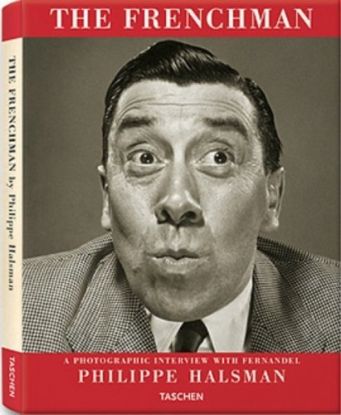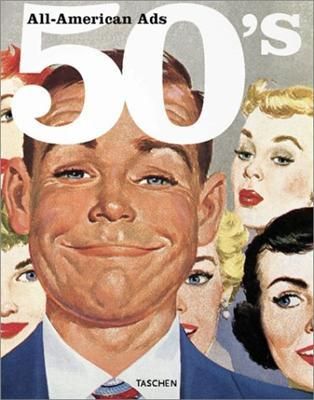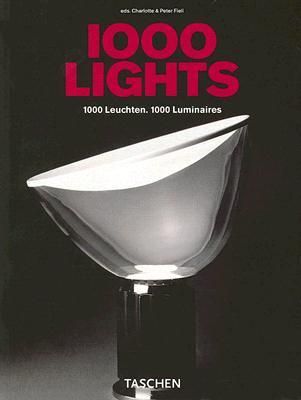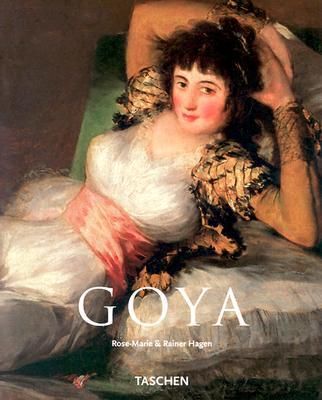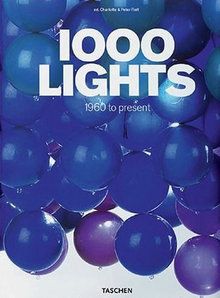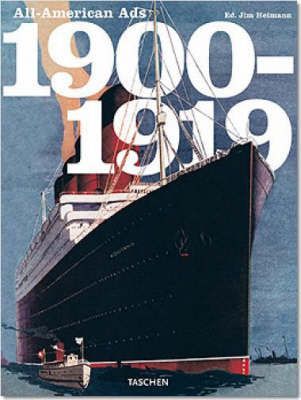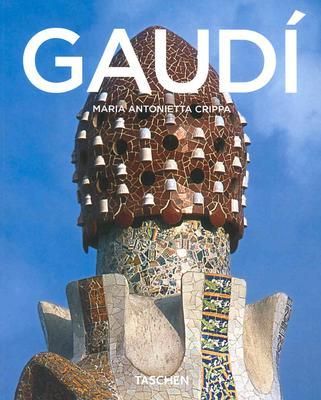Taschen
vydavateľstvo
100 Contemporary Green Buildings
Eco-friendly building in the world today The most exciting new buildings in the world are now almost all environmentally aware, sustainable, and conceived to consume far less energy than ever before. That architecture is one of the major sources of greenhouse gases in the world makes this new trend is all the more significant. This book brings together the best examples of green projects from the "Architecture Now" series together with numerous new, never-before-seen projects. Well-known architects like Frank Gehry and Norman Foster are present right alongside young, up-and-coming creators from Latin America, the United States, Europe, and Asia. This is not a technical book, nor are its contents limited to any pre-defined category. Being "green" means being aware of the responsibility implied in the construction and use of modern buildings, and there are many ways to express this rising consciousness. Some solutions, the ones generally called "passive," are as old as the history of architecture, while others are born of cutting-edge technologies. Both approaches and many more are included in this ground-breaking collection of 100 of the world's most exciting recent eco-friendly buildings.
Vypredané
41,75 €
43,95 €
The New Erotic Photography Vol.1
The world's finest contemporary erotic photographers
Imagine walking into a room filled with the world’s finest contemporary erotic photographers, each with a portfolio of his or her best work. As you browse the photographs they discuss inspiration, censorship, how to find models, and how to make a living capturing beautiful women on film and in pixels.
The New Erotic Photography is the room, and dozens of photographers from various countries are the hosts of this intimate gathering. In this 320 page volume you will meet Ralph Gibson, Jan Saudek, Terry Richardson, Natacha Merritt, Petter Hegre, Richard Kern, and the many fresh new talents currently redefining eroticism. Playful, provocative and exuberantly sexy, these aren’t your granddad’s art nudes—this is The New Erotic Photography.
Vypredané
10,97 €
11,55 €
Racinet Costume History
Togas, Turbans, Tailcoats And Top Hats. The evolution of style from antiquity to 1888. Originally published in France between 1876 and 1888, Auguste Racinet's "Le Costume historique" was the most wide-ranging and incisive study of clothing ever attempted. Covering the world history of costume, dress, and style from antiquity through the end of the 19th century, the great work - published in six volumes containing nearly 500 plates - remains, to this day, completely unique in its scope and detail. Racinet's organization by culture and subject has been preserved in TASCHEN's magnificent and complete reprint, as have excerpts from his delightful descriptions and often witty comments. Volume I contains all plates from Racinet's work, reproduced in brilliant quality and showing the original's love for detail and color. Volume 2 collects the texts accompanying the images, giving descriptions and explanations, as well as the introduction by Francoise Tetart-Vittu. Perusing these beautifully detailed and exquisitely colored illustrations, you'll discover everything from the garb of ancient Etruscans to traditional Eskimo attire to 19th century French women's couture. Though Racinet's study spans the globe from ancient times through his own, his focus is on European clothing from the Middle Ages to the 1880s and this subject is treated with exceeding passion and attention to detail.
Vypredané
41,75 €
43,95 €
Architecture Now! Landscape
Turning the world green. The architecture of the great outdoors. One of the hottest areas of contemporary design is clearly landscape architecture. No matter what the architectural style of the moment, the green areas around houses, stadiums or corporate headquarters have taken on a considerable importance, all the more so with the emphasis on ecology and green design. This book calls on the work of the top designers of the moment, from Ken Smith, author of the "Museum of Modern Art's" rooftop garden to West8 from Rotterdam, but also on architects ranging from Foreign Office to Tadao Ando who have long been fascinated by the environments of their buildings. There are new names like the Lebanese landscape architect Vladimir Djurovic and well-known ones like Martha Schwartz. There are established firms like the Wirtz family from Belgium or Gustafson Porter from the United States and young creators like Sophie Agata Ambroise from Lugano. The limit between architecture and landscape architecture is not always easy to define, but this new book opens the doors and windows of today's architecture into the gardens of tomorrow. Featured architects and practices include: AECOM, Tadao Ando, Balmori Associates, Patrick Blanc, Caffarena, Cobos et al, Cervino Lopez, Vladimir Djurovic, DSR, Peter Eisenman, EMBT, James Corner Field, Glavovic Studio, Carrilho da Graca, Gustaffson Guthrie, Gustaffson Porter, Zaha Hadid, Herzog & de Meuron, Steven Holl, Martin Hurtado, Raymond Jungles, Maya Lin, LRO, Giovanni Maciocco, Michael Maltzan, Mecanoo, Fernando Menis, Eduardo de Miguel, Catherine Mosbach, Sotoji Nakamura, Victor Neves, NGBM, Nieto Sobejano, Officina del Paesaggio, Okra, John Pawson, Renzo Piano, Palerm Tabares, Masuno Shunmyo, Ken Smith, Taylor Cullity Lethlean, Michael van Valkenburgh, Weiss Manfredi, West8, and Wirtz International, Work AC.
Vypredané
32,25 €
33,95 €
Helmut Newton Sumo XL
Najväčšia vyrobená kniha 20. storočia je opäť tu!
Táto gigantická kniha bola unikátna v každom ohľade: 480 strán prác skvelého, ale tiež kontroverzného fotografa lámalo rekordy rozmermi i váhou. Päťdesiat ľudí sa tri roky podieľalo s Helmutom a June Newtonovými na vytvorení publikácie, ktorá vážila 30 kg. Ale veľkosť nebola všetko. Kvalita tlače, papiera i väzby prispela k faktu, že sa SUMO stalo celosvetovým vydavateľským počinom a knihy sú pýchou mnohých slávnych zbierok vrátane Museum of Modern Art v New Yorku.
Teraz, po desiatich rokoch, SUMO ponúkame v ekonomickejšej podobe, ale so zhodným obsahom ako pôvodná verzia.
SUMO predstavuje 350 fotografií, ktoré pokrývajú všetky stránky Newtonovej výnimočnej tvorby, pričom väčšina z nich je prvý raz publikovaná. Od ohromujúcich módnych fotografií, ktoré ovplyvnili celé generácie mladších fotografov, až po silné, erotické akty či dokonale vypovedajúce portréty celebrít.
Výhodou čitateľov nového vydania je fakt, že už nebudú pri práci s monografiou limitovaní jej veľkosťou a s pomocou stojanu, ktorý je súčasťou knihy, si môžu pohodlne vychutnať krásu a výnimočnosť tohto knižného skvostu.
Vypredané
128,25 €
135,00 €
Movies of the 90s ju
As the 20th century came to a close...All the 1990s movies most worth remembering. It was tough, but we did it: we whittled down the best and most memorable movies of the 1990s into a list of 100 titles from around the world. Packed full of photos and film stills, TASCHEN's "Favorite Movies of the 90s" is more than just a best-of roundup. It's also an opulent factbook that any self-respecting moviegoer shouldn't be without. It features: four to ten pages for each film, including lots of illustrations, cast/crew credits, and a summary of the film describing the genre, history, filming, facts, budget, box office, etcetera; list of Academy and film festival awards; bloopers, trivia, memorable lines, gossip; and actor, director, subject, and title indexes.
Vypredané
41,75 €
43,95 €
Living in Provance T25
La belle vie. The textures and tones of dreamy Provence. Nestled in the south of France, bordering the Mediterranean sea, is a magical region of the world renowned for its lavender fields, fine cuisine, golden sun, and dreamy landscapes. This land, known as Provence, has inspired such writers and artists as Alphonse Daudet, Frederic Mistral, and Vincent Van Gogh. Paul Cezanne loved the region's Mount Sainte Victoire so much that he immortalized it in his famous paintings; his Provence studio, which still looks the same as it did over one hundred years ago, is featured herein, as is the house where Mistral, 1904 Nobel prize-winner, lived and wrote. Also included are photographs of the famous Hotel Nord-Pinus in Arles where Jean Cocteau sojourned and Picasso stayed when he came to see the bullfights. Bringing together the region's most remarkable interiors, classical and contemporary, this book paints a gorgeous picture of Provencal living.
Vypredané
10,97 €
11,55 €
Fashion A Fashion History of the 20th Century
Clothes define people. A fashion history from the 18th to the 20th century. A person's clothing, whether it's a sari, kimono, or business suit, is an essential key to his or her culture, class, personality, or even religion. The Kyoto Costume Institute recognizes the importance of understanding clothing sociologically, historically, and artistically. Founded in 1978, the KCI holds one of the world's most extensive clothing collections and has curated many exhibitions worldwide. With an emphasis on Western women's clothing, the KCI has amassed a wide range of historical garments, underwear, shoes, and fashion accessories dating from the 18th century to the present day. Showcasing a vast selection from the Institute's archives of skilled photographs depicting the clothing expertly displayed and arranged on custom-made mannequins, "Fashion History" is a fascinating excursion through the last three centuries of clothing trends. The KCI believes that "clothing is an essential manifestation of our very being" and their passion and dedication positively radiate from every page of this book.
Vypredané
10,97 €
11,55 €
Gustav Klimt (1826 - 1918)
Jeho revolta proti akademizmu strhla koncom 19. storočia vlnu odporu. Bol terčom urážok, ale aj nadšeného obdivu. Pre jedných bol šíriteľom pornografie, pre iných zase otcom novej maľby. Rakúšan Gustav Klimt bol presvedčený, že umenie je o slobode.
Jeho maľba bola oslavou života, ale najmä ženy. On je moderným tvorcom tajomnej a dráždivej femme fatale osudovej ženy. Stal sa ikonou viedenskej secesie. Kto sa chce o mne ako umelcovi niečo dozvedieť, ten nech sa pozorne pozerá na moje obrazy a
z nich nech sa snaží poznať, čo som a čo chcem, povedal raz Klimt, ktorý zásadne odmietal autoportréty. Nerád sa opisoval. Nechával za seba rozprávať obrazy. Svojim obľúbeným témam však venoval maximálnu pozornosť. Ženy, život a smrť. Magický kalei
doskop, ktorý Klimt posunul do neznesiteľne ľahkého tanca.
Vypredané
12,30 €
12,95 €
Frenchman
In New York in 1948, photographer Philippe Halsman had a chance meeting with Fernandel, a French movie star from the vaudeville tradition, and asked the actor to participate in a completely original photographic experiment. Halsman would ask Fernandel questions about America to which he would respond using only facial expressions. With his wide, lovable horse-face, Fernandel mimicked the answers to such questions as “Does the average Frenchman still pinch pretty girls in a crowd?” (silly grin) and “What was your reaction to the great American game of baseball?” (perplexed). Fernandel’s reactions are laugh-out-loud funny, and the book that resulted from this unusual collaboration is nothing short of wonderful. The Frenchman has been out of print for over fifty years, but TASCHEN’s reprint thankfully brings it back to life.
Vypredané
22,04 €
23,20 €
All-American Ads 50
Second in a series of books featuring advertising by era, All-American Ads of the 50s offers page after page of products that made up the happy-days decade. The start of the cold war spurred a buying frenzy and a craze for new technology that required ad campaigns to match. The nuclear age left its mark all over the advertisements, with a spotlight on planes, rockets, and even mushroom clouds. Shiny, big, beautiful cars abound, styled to keep up with the space age. Editor Jim Heimann, in his essay "From Poodles to Presley, Americans Enter the Atomic Age," explains: "Car designers came up with exaggerated tail fins for automobiles to express this new accelerated speed." Modernist home interiors look slick and shiny with their molded plastic furniture and linoleum floors. While clothing and furniture styles look strangely contemporary--a testament to our current obsession with vintage--some things have definitely changed. A baby sells Marlboro cigarettes! Also included are chapters on movies, food, and travel. --J.P. Cohen
Vypredané
40,68 €
42,82 €
1000 Lights
Designed to be a companion to the classic title 1000 Chairs, this edition contains an awesome selection of over 1000 lights. Presented chronologically by decade are history’s most interesting electric lights, from Edison's first light to Tiffany's beautiful leaded glass shades to completely outrageous designs from the late 1960s and 1970s to the latest high-tech LED lamps. All major styles are represented here—Arts & Crafts, Art Nouveau, Art Deco, Modern Movement, De Stijl, Postwar, Pop, Radical, Post-Modern, and Contemporary—in 704 pages of truly illuminated works.
Vypredané
43,83 €
46,14 €
Goya Francisco
Francisco Goya (1746-1828), one of Spain’s most revered and controversial painters, is known for his intense, chilling, and sometimes grotesque paintings depicting the injustice of society with brutal sincerity.
Vypredané
4,70 €
4,95 €
1000 Lights II.
Designed to be a companion to the classic title 1000 Chairs, this two-volume edition contains an awesome selection of over 1200 lights. Presented chronologically by decade are history’s most interesting electric lights, from Edison's first light bulb to Tiffany's beautiful leaded glass shades to completely outrageous designs from the late 1960s and 1970s to the latest high-tech LED lamps. All major styles will be represented: Arts & Crafts, Art Nouveau, Art Deco, Modern Movement, De Stijl, Postwar, Pop, Radical, Post-Modern and Contemporary.
Vypredané
43,83 €
46,14 €
All American Ads 1900-1919
A far cry from the aggressive ads we’ve become used to, American print advertisements from the first two decades of the 20th century were almost shockingly pleasant. Intricately designed and beautifully illustrated, often in the art nouveau style popular at the time, four-color, full-page magazine advertisements were welcome respites from the bland, text-filled pages among which they appeared. Sales pitches were earnest and friendly&894 beer, for example, was billed as “The Evening Glass of Cheer” and toothpaste was described as “Delicious Ribbon Dental Cream”—perhaps not the catchiest slogans, but they were on to something. The American consumerist boom of the 20th century was just beginning and advertising was getting its sea legs. From motorcars to hair tonics to steamship cruises to Coca-Cola (“After the theatre drink a glass… it relieves fatigue”), America was peddling its wares in style and setting an example of how to advertise in the modern age. This exhaustive compendium of ads from the period—many of which haven’t been seen for over eight decades—is a fascinating reminder of surprisingly simpler times and a rediscovery of a forgotten age in advertising history.
Vypredané
43,83 €
46,14 €
Antoni Gaudí
Raised during the Industrial Revolution, Spanish architect Antoni Gaudí (1852-1926) strove to distinguish and reaffirm the identity of his native Catalonia as Spain and the rest of Europe modernized. Early neo-Gothic designs were the stepping-stone to the mature, original style that came to be synonymous with his name. Incorporating bold colors and odd bits of material into his designs, Gaudí created inspiring, visionary buildings and helped establish Barcelona (most notably with the still-unfinished Sagrada Família cathedral) as a city of the world.
Vypredané
10,37 €
10,92 €









